Solid Wood Flooring Installation
Fill in your details below - we'll reach out to schedule a free quote!
We will get back to you as soon as possible
Please try again later
Solid Wood Flooring Installation Company
At JD Flooring, we specialize in the installation of solid wood floors.
We believe that wood flooring is an excellent choice for any home, as it is durable and easy to maintain. In addition, wood flooring can add value to your home and give it a classic, timeless look.
Our team of experienced professionals has installed wood floors in a wide variety of homes, and we would be happy to do the same for you.
We understand that every home is unique, and we will work with you to find the perfect solution for your space.
Contact JD Flooring today to learn more about our services or to schedule a free consultation.
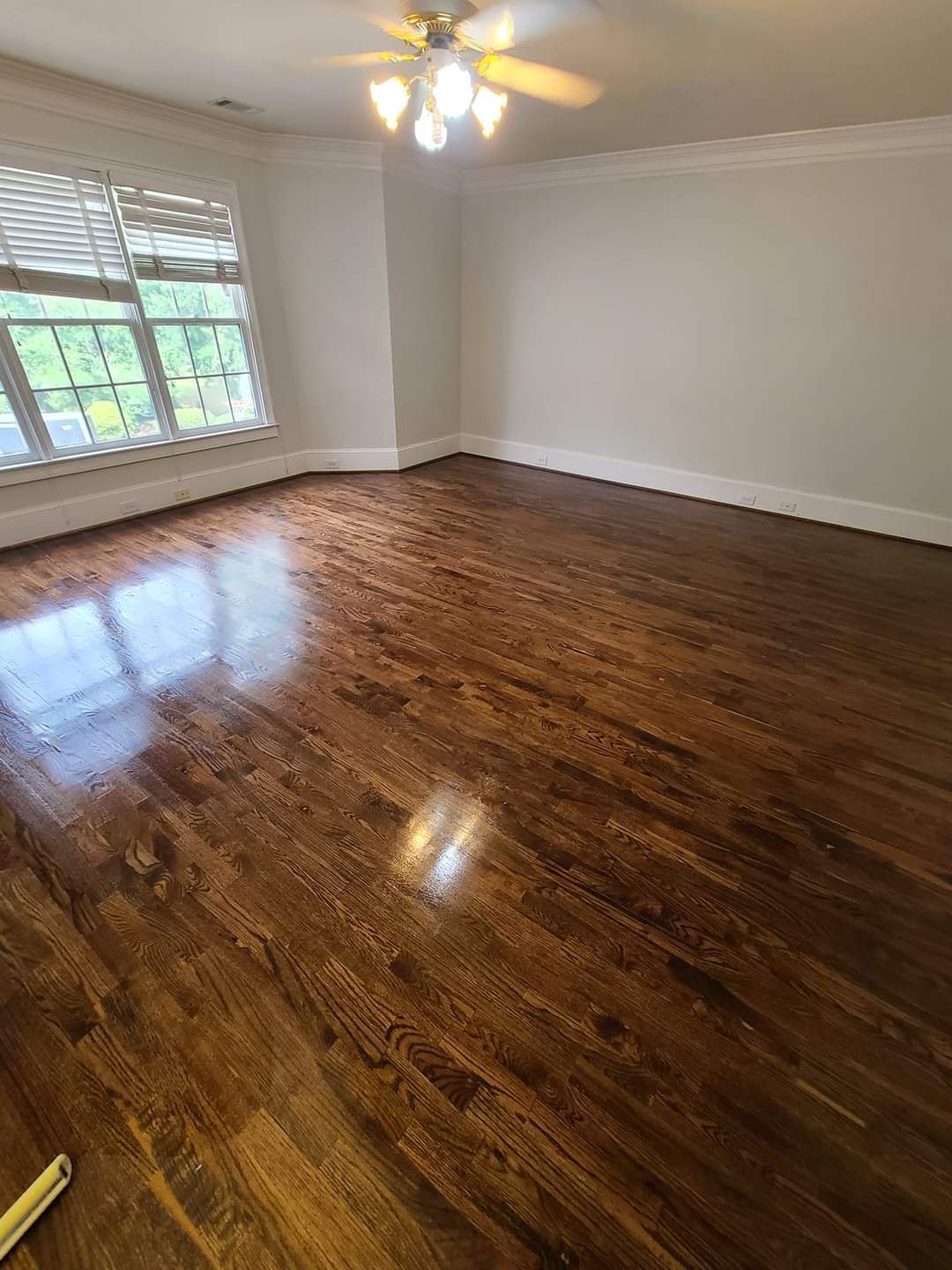
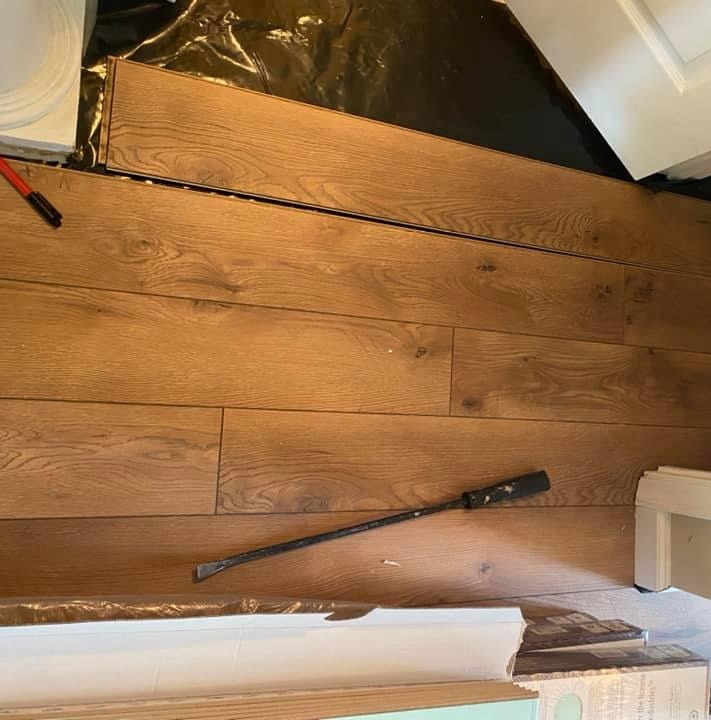
Solid Wood Flooring Installation Contractors
When it comes to installing hardwood floors, you want to be sure that the job is done right.
JD Flooring works with skilled and experienced contractors who are licensed and insured.
We have installed all kinds of hardwood floors in all kinds of settings, so you can be confident that your floor will be installed correctly.
So if you're looking for a high-quality hardwood floor installation, trust the experts at JD Flooring.
Local Solid Wood Flooring Installers
At JD Flooring, we pride ourselves on being a local company with extensive experience.
We have installed solid wood floors in all kinds of homes.
We know the temperature and humidity ranges for your area, and we have the experience to know just how to install your wood floors for minimum risk and maximum strength.
In addition, we offer a variety of finishes and colors to choose from, so you can find the perfect look for your home.
Whether you're looking for a traditional or contemporary look, we have the perfect option for you.
Contact us today and let us help you find the perfect floor for your home.
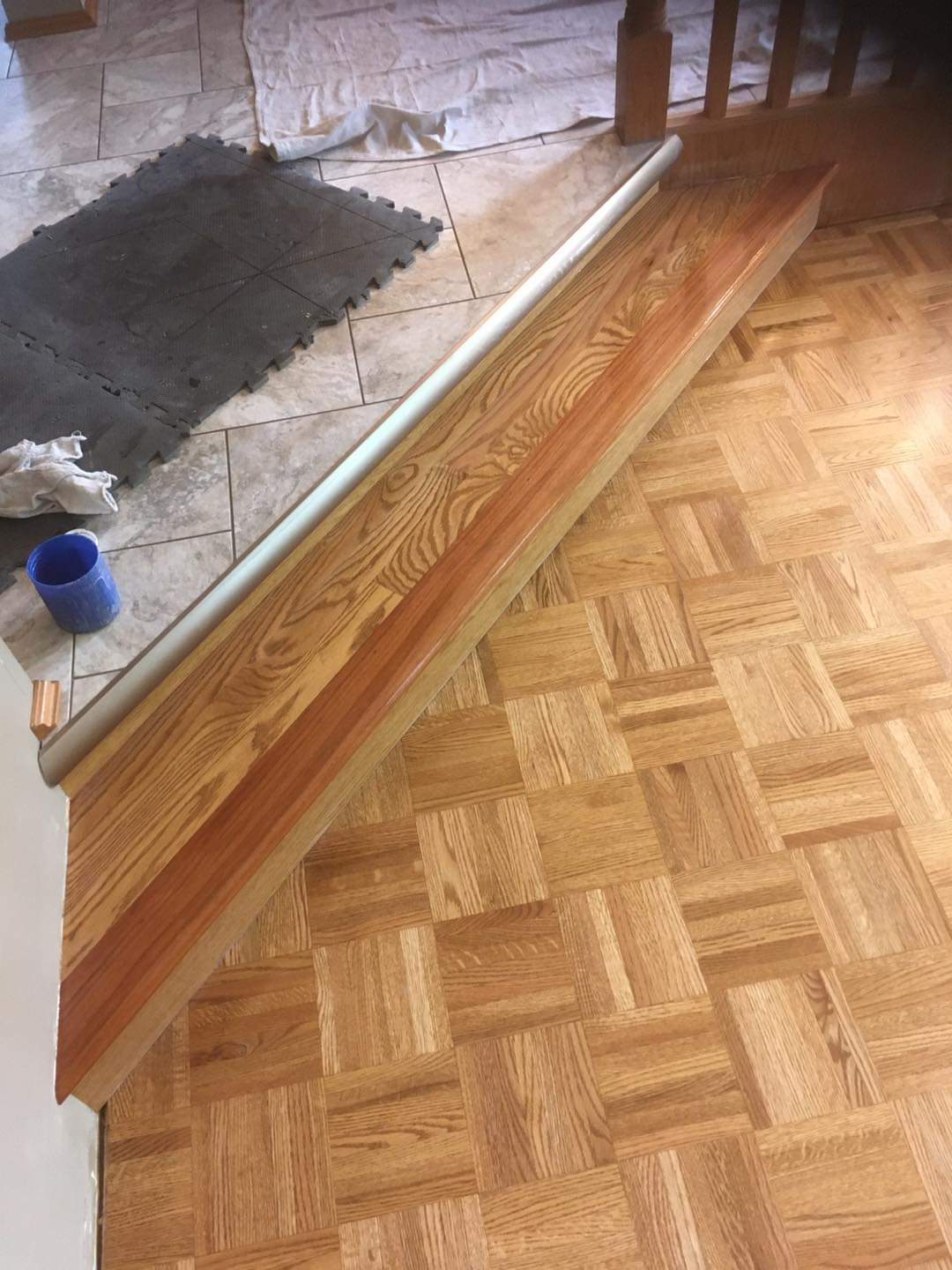
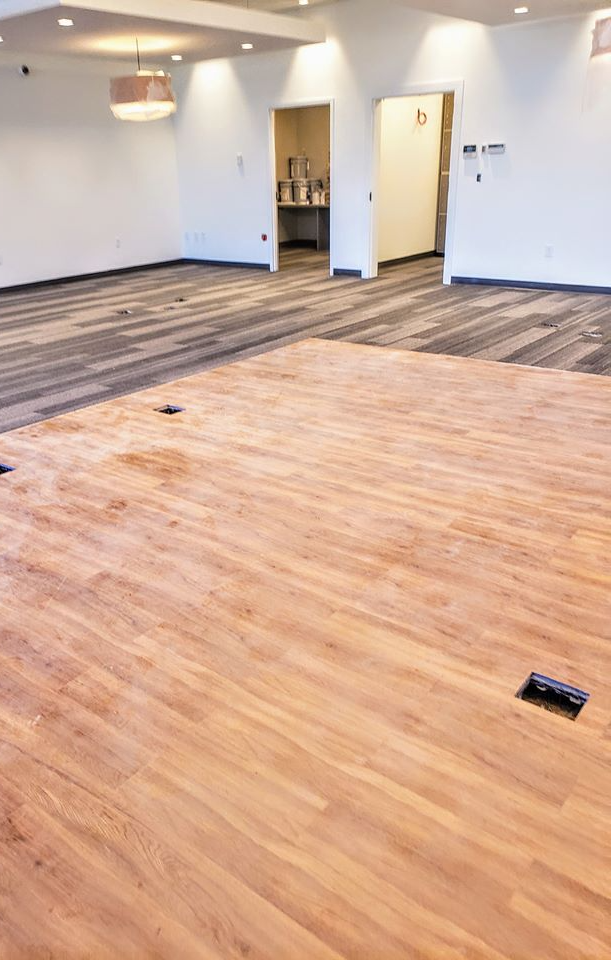
What is Solid Hardwood Flooring?
Solid hardwood flooring is just what it sounds like – it’s made from a solid piece of wood.
Because it’s a solid piece of wood, it can be sanded down and refinished multiple times, which is one of the reasons it’s such a popular choice for floors.
Solid hardwood floors can be made from different kinds of wood, including oak, maple, cherry, and walnut. The type of wood you choose will affect the look and feel of your floors.
For example, oak is a strong and durable wood that tends to be more affordable, while cherry is a softer wood that has a beautiful natural color.
When choosing solid hardwood floors, you’ll also need to decide on the thickness of the boards. Thinner boards are less expensive but may not be as durable as thicker boards.
Ultimately, the decision of whether to choose thin or thick boards will come down to personal preference and budget.
Solid Wood Flooring Installation Process
Solid wood flooring installation takes a considerable amount of skill, knowledge and experience to do perfectly.
Gratefully, our flooring installation contractors have been working with hardwood floors for years.
When done right, hardwood floors can last a lifetime. Read on for a glimpse at our solid wood flooring installation process.
Choose Your Wood Floor & Finish
The first step in the solid wood flooring installation process is to choose what type of wood you'd like to use, and the boards themselves.
This is important because it will decide what other products are necessary for proper floor installation.
You can choose your finish at this step, too, but it's possible to do test squares at the end of installation before the finish is applied to the floor.
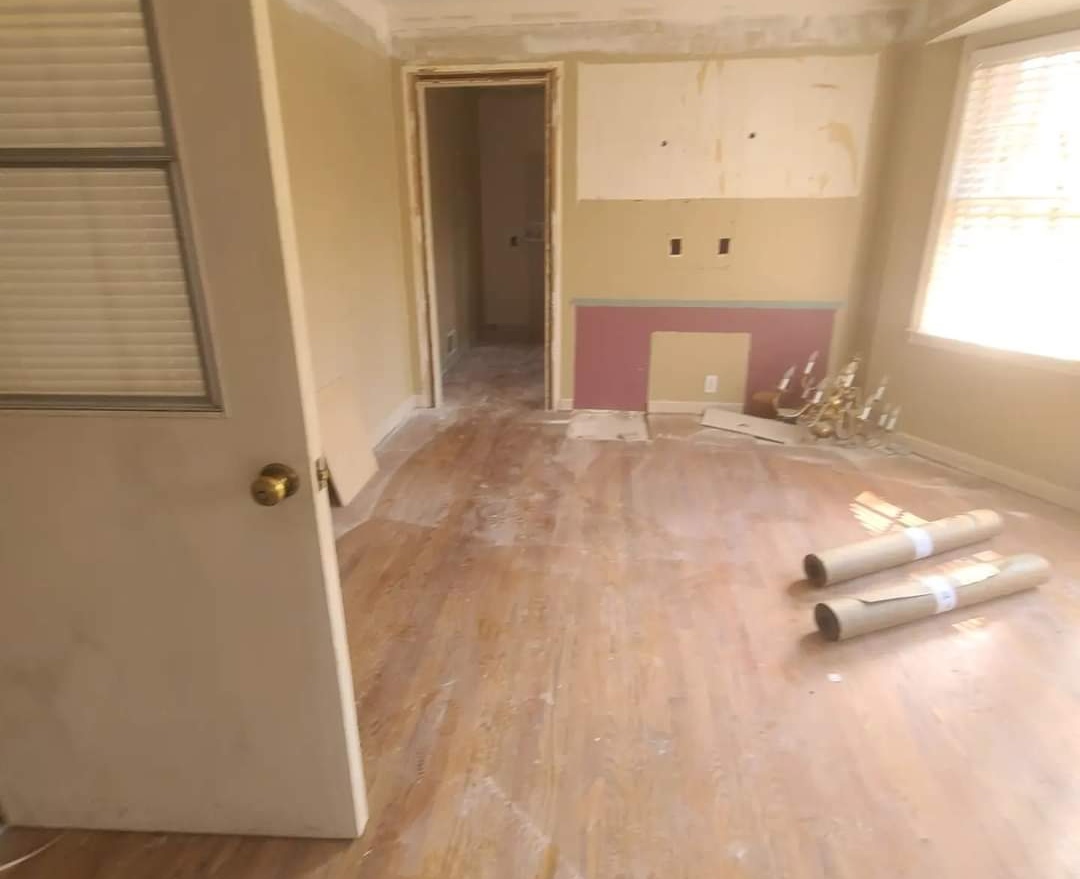
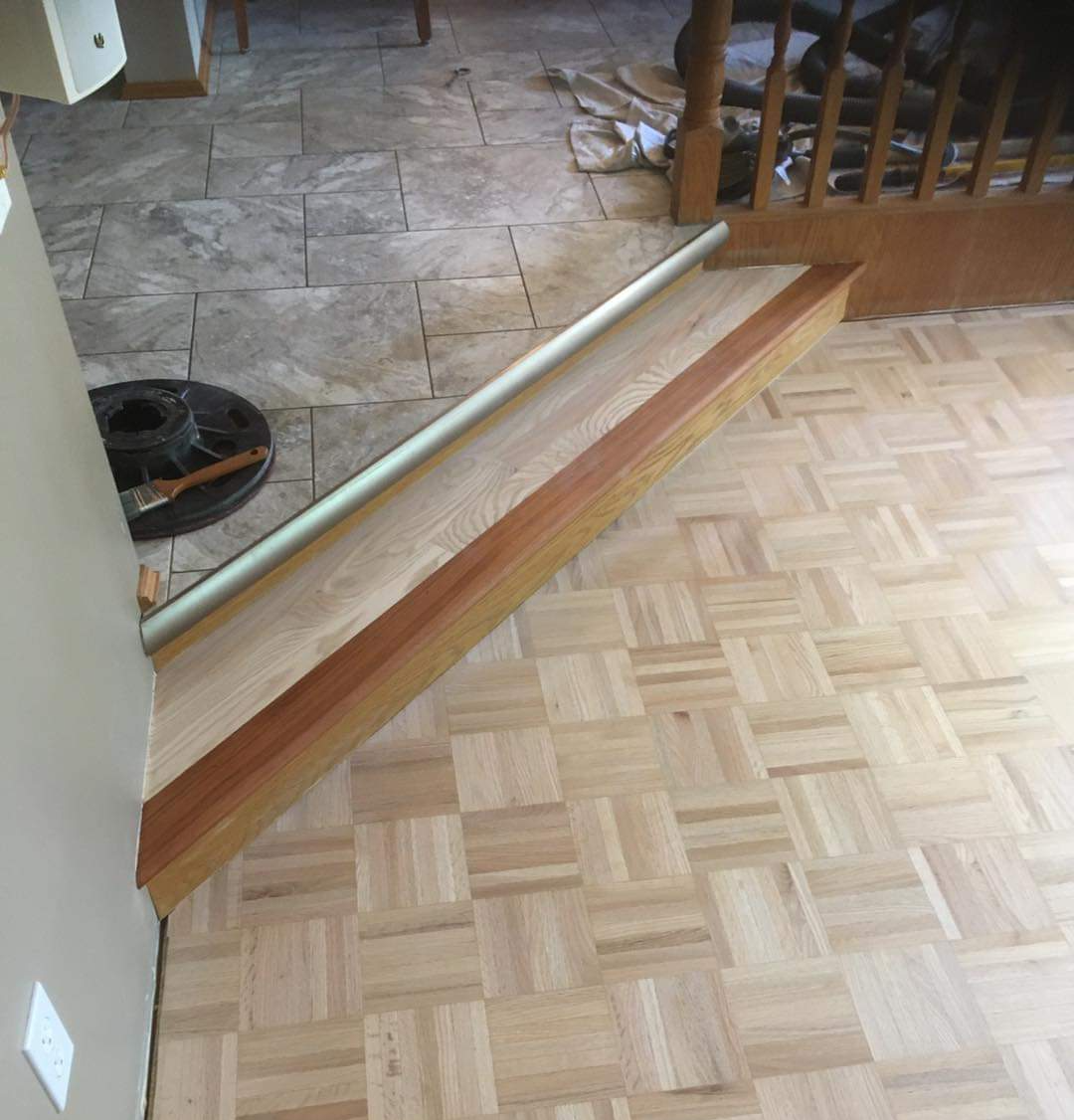
Remove Doors and Base Molding
The second step in the solid wood flooring installation process is to remove the doors & base molding from the room.
This is an important step because it allows the contractor to install the new flooring without any obstacles in the way.
Prepare Subfloor
The third step in the solid wood flooring installation process is to prepare the subfloor for the new flooring.
This usually involves leveling the subfloor and ensuring that it's clean and free of debris.
Acclimate The Wood Flooring
The fourth step in the solid wood flooring installation process is to acclimate the new wood flooring.
This is an important step because it allows the wood to adjust to the temperature and humidity of the room, which will prevent it from shrinking or expanding once it's installed.
Hardwood Floor Layout & Preparation
The fifth step in the solid wood flooring installation process is to layout the flooring pattern.
This is an important step because it ensures that the new flooring is installed correctly and evenly.
Precise measurement of the area also takes place at this step.
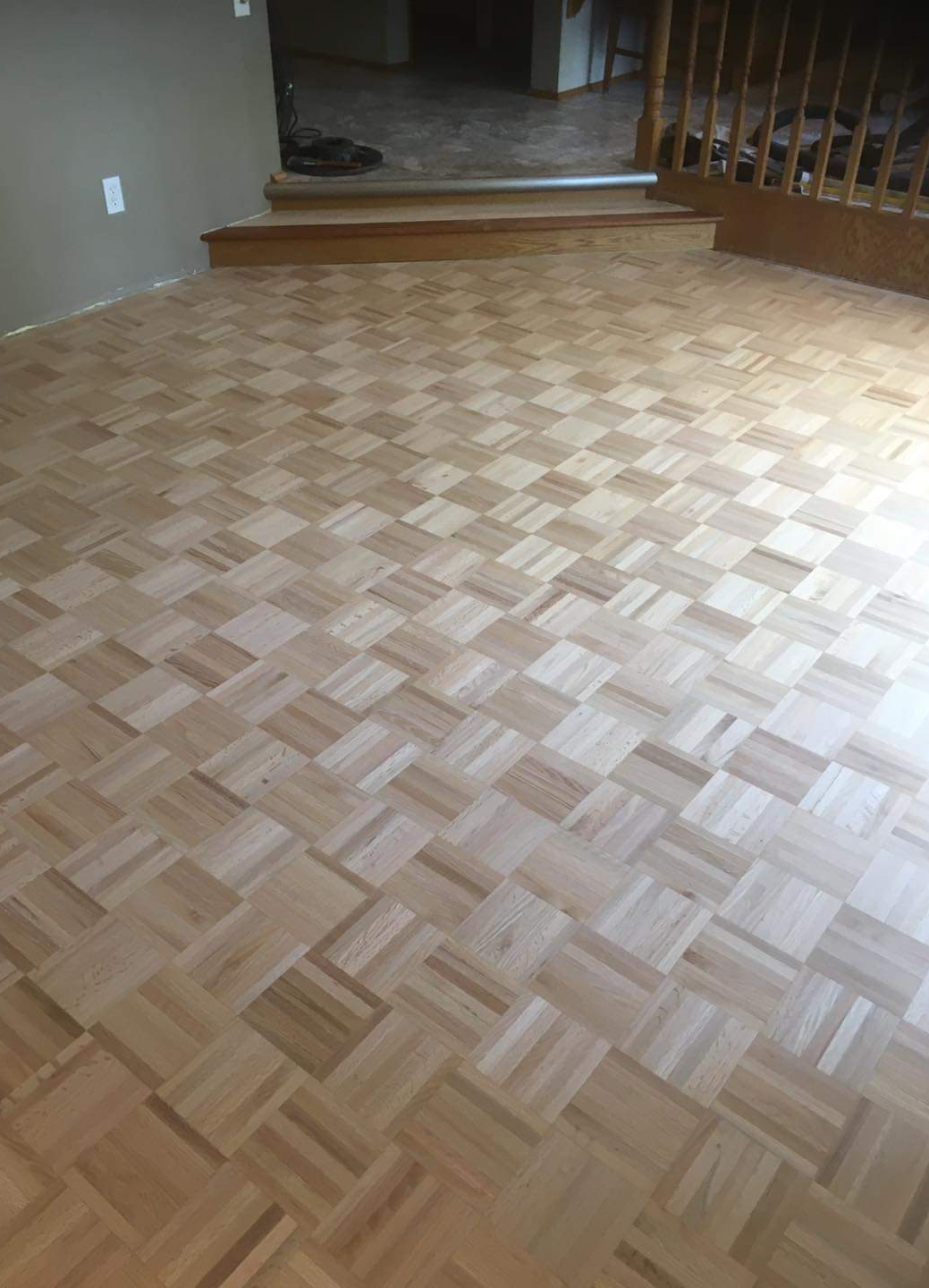
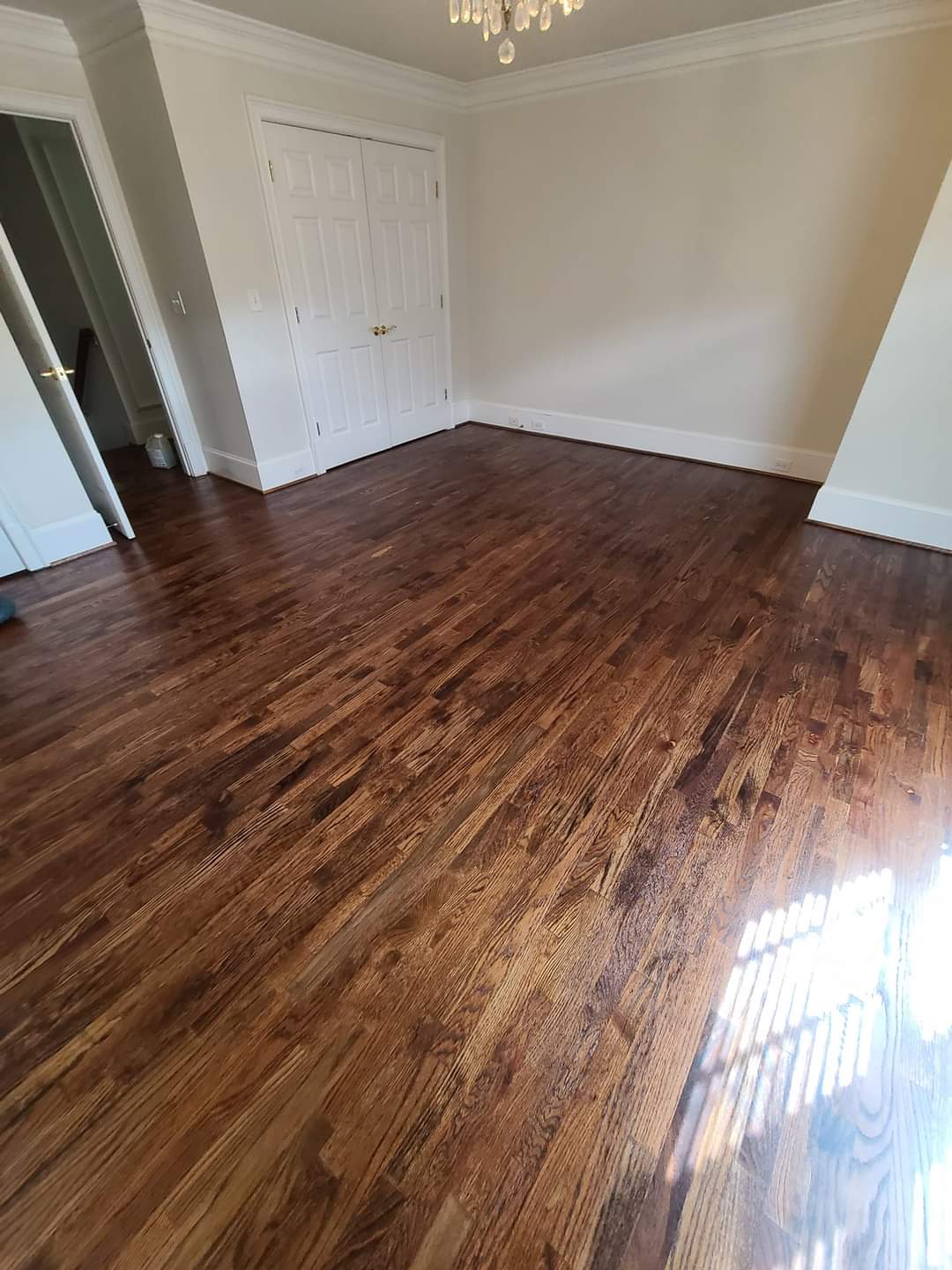
Cut Hardwood Flooring
The sixth step in the solid wood flooring installation process is to cut the hardwood flooring planks.
This is an important step because it ensures that the new flooring fits correctly and looks seamless once installed.
We do this by using a chop saw and a miter box.
Laying the Hardwood & Fastening
The seventh step in the solid wood flooring installation process is to lay the hardwood and fasten it to the subfloor.
This is an important step because it ensures that the new flooring is installed correctly and securely.
We do this by using a pneumatic nailer and staples.
Replacing Baseboards & Doors
The eighth step in the solid wood flooring installation process is to replace the baseboards & doors.
This is an important step because it finishes off the installation and makes the room look complete.
We do this by measuring and cutting the baseboards to size, then nailing them into place. Finally, we reinstall the doors.
Finishing The Solid Wood Floor
The ninth and final step in the solid wood flooring installation process is to finish the floor.
This is an important step because it protects the new flooring and makes it shine. Once the finish is dry, we buff it to a high shine.
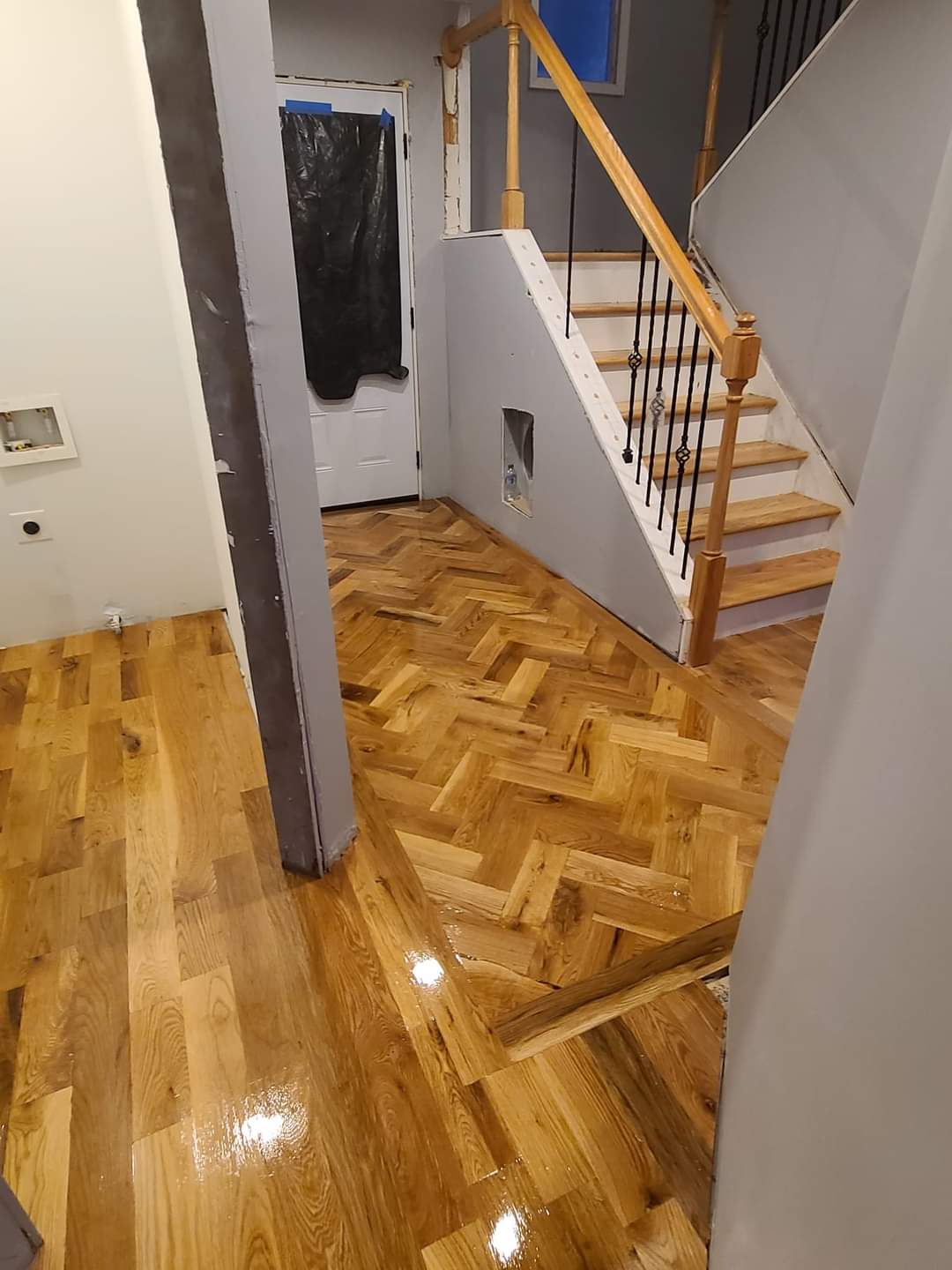
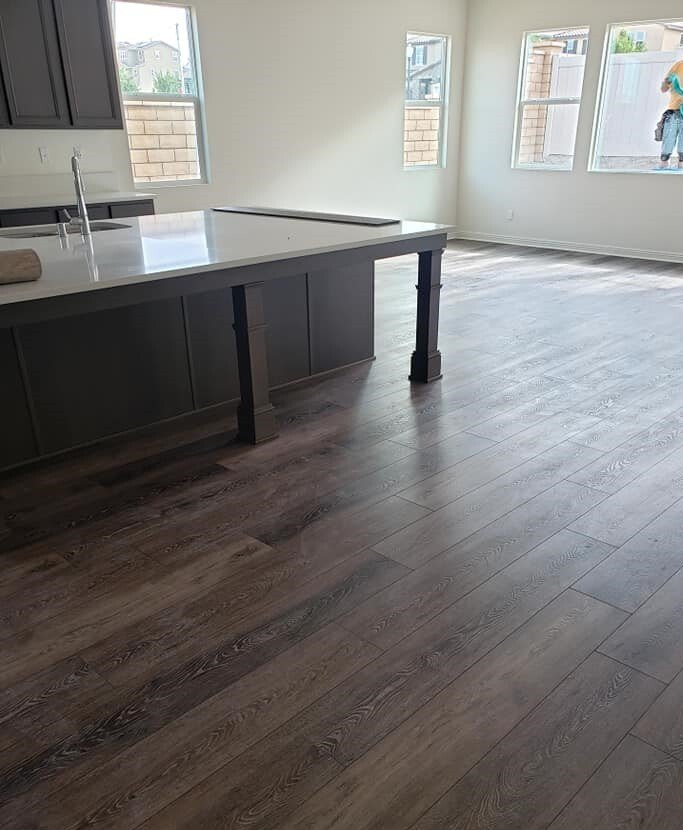
Benefits of Solid Wood Flooring
Wood flooring has been a popular choice for centuries, and for good reason. Solid wood floors are durable and easy to care for, and they can add value and beauty to any home.
Wood floors are also a natural choice for those who are concerned about indoor air quality, as they do not harbor dust or allergens the way carpets can.
In addition, wood floors are gentle on the feet and can help to reduce noise levels in the home. There are many different types of wood flooring available, so there is sure to be a style that meets your needs.
Whether you are looking for a classic look or something more modern, solid wood flooring is an excellent choice.
Maintaining Solid Wood Floors
Solid wood floors are a beautiful and durable option for home flooring, but they require a bit more care than other types of floors.
Here are a few tips for maintaining solid wood floors:
- Sweep or vacuum regularly to remove dirt and grit. Be sure to use a soft brush attachment, as the weight of the vacuum can damage the finish.
- Mop with a damp cloth or mop. Avoid using excessive water, as this can cause the wood to warp.
- Use furniture pads under heavy furniture to prevent scratches.
- Place mats at entrances to trap dirt and debris.
By following these simple tips, you can keep yoursolid wood floorslooking like new for years to come.
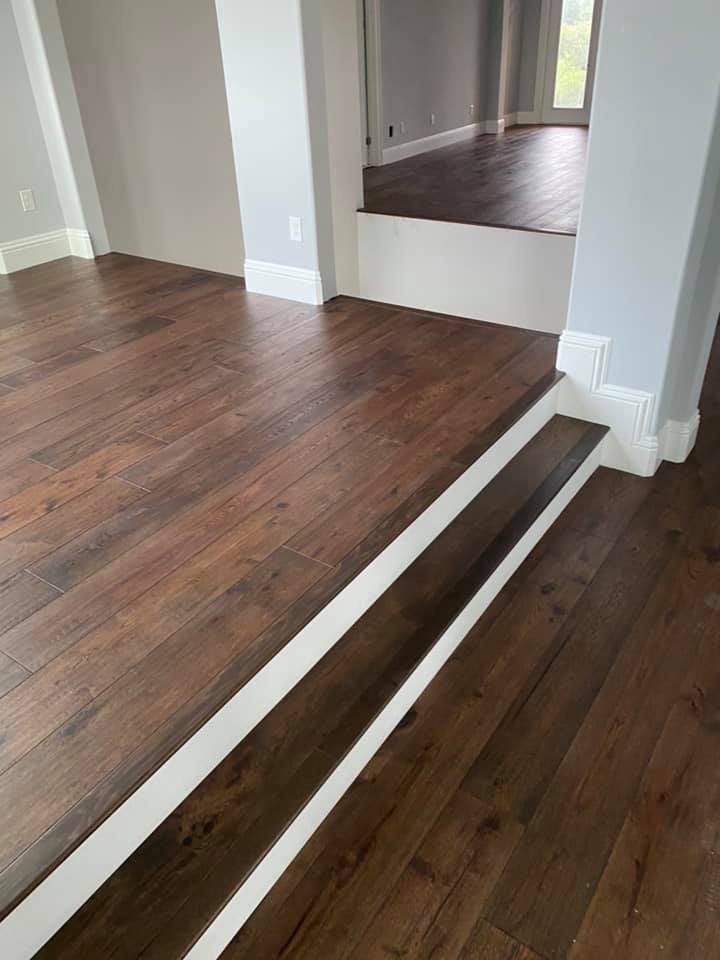
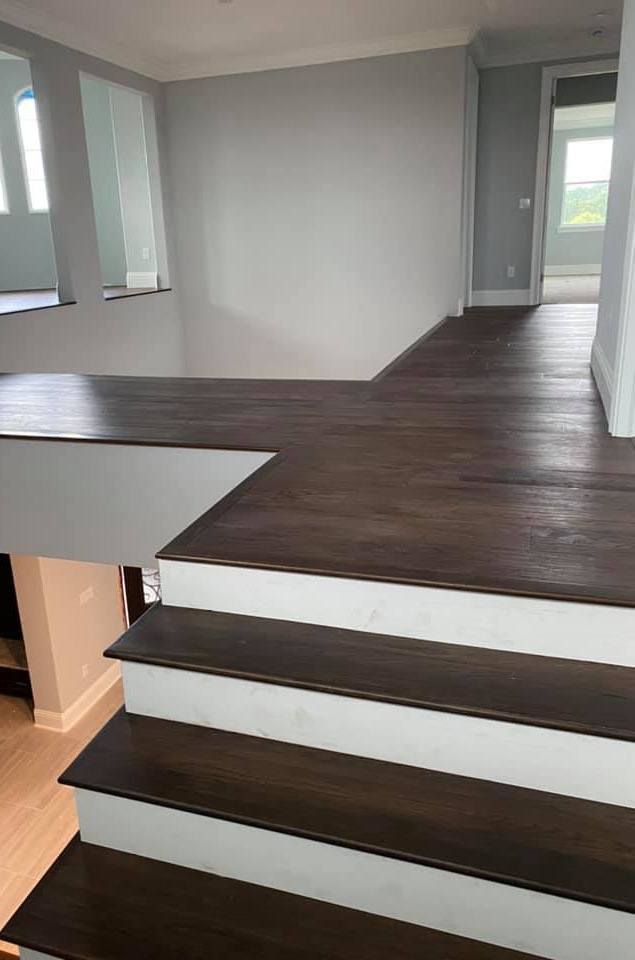
How Much Does Solid Wood Flooring Installation Cost?
The cost of installing solid wood flooring can vary depending on a number of different factors. The most important factor is the size of the area that needs to be covered.
Larger rooms will obviously require more material and labor, and therefore will be more expensive. The type of wood being used is also a major consideration.
Some woods are more expensive than others, and may require special treatments or finishes. The condition of the subfloor is also a factor, as damaged or uneven floors will need to be repaired before the new floor can be installed.
Finally, the complexity of the installation itself can affect the price. Simple installations will naturally be less expensive than those that require intricate patterns or finishes.
By taking all of these factors into account, you can get a better sense of how much it will cost to install solid wood flooring in your home.
Solid Wood Flooring Installation FAQs
Why do you need underlayment for hardwood floors?
While it is not always required, underlayment can help to improve the performance of your hardwood floors in a number of ways.
First, it helps to reduce noise by absorbing impact and dampening sound. This is especially important in apartments or other multi-level homes, where floor noise can be a real nuisance.
In addition, underlayment can provide additional warmth and insulation, making your home more comfortable and energy-efficient.
Finally, underlayment can help to prolong the life of your floors by protecting them from wear and tear. When installed correctly, underlayment can provide many years of trouble-free service.
What is the recommended underlayment for hardwood flooring?
There are a few different types of underlayment that can be used with hardwood flooring, but the most common is a sheet of plywood or particle board.
This material is relatively thin and easy to install, and it provides a flat, level surface for the hardwood boards to be attached to. Another type of underlayment that is sometimes used is a foam pad. This material is softer and more cushioning than plywood or particle board, and it can help to reduce noise and impact damage.
However, it is also more expensive and difficult to install. Ultimately, the best underlayment for hardwood flooring will depend on the specific needs of the installation.
Which type of hardwood flooring is right for you?
There are many different types of hardwood flooring available on the market today, and each has its own unique advantages.
For example, solid hardwood floors are made from a single piece of wood and are very durable. However, they can be more difficult to install than other types of hardwood floors.
Engineered hardwood floors are made from layers of wood that are glued together. They are more stable than solid hardwood floors and can be installed over a variety of subfloors.
When choosing hardwood flooring, it is important to consider your budget, your lifestyle, and the installation process.
How thick is hardwood flooring?
There are many factors to consider when choosing hardwood flooring for your home. One important factor is thickness. The thickness of hardwood flooring can range from 3/8 inch to 3/4 inch.
The thicker the flooring, the more durable it will be. Thickness also affects the height of the tongue and groove. The tongue is the part of the plank that interlocks with the groove of the next plank.
A higher tongue means a tighter fit and less opportunity for moisture and dirt to get underneath the floorboards.
When shopping for hardwood flooring, be sure to ask about thickness and tongue and groove height to ensure you choose the best possible product for your needs.
When is the best time to replace my hardwood floor?
There are a few factors to consider when deciding when to replace your hardwood floor.
First, take a look at the condition of the floor. If it is starting to show signs of wear, such as scratches or discoloration, then it may be time to replace it.
Second, consider how long the floor has been in place. Even with proper care, hardwood floors will eventually need to be replaced after several years.
Finally, think about your personal style preferences. If you are tired of the look of your hardwood floor, then replacing it may be the best option.
How long do hardwood floors last?
When it comes to choosing flooring for your home, hardwood is often seen as a wise investment. Not only is it timeless and beautiful, but it's also known for its durability.
So, how long can you expect hardwood floors to last? With proper care and maintenance, hardwood floors can easily last a lifetime. That said, there are a few factors that can impact their longevity.
For instance, cheaper grades of wood are more likely to show wear and tear over time. In addition, floors that see a lot of traffic are more likely to suffer from scratches and scuffs.
How do temperature and humidity affect hardwood floors?
Hardwood floors are a beautiful and popular choice for many homes, but they can be sensitive to changes in temperature and humidity. Too much moisture in the air can cause the wood to swell, while too little moisture can cause the wood to shrink.
This can lead to cracks or gaps in the floors. Fluctuations in temperature can also cause the wood to expand or contract, leading to further damage. To help protect your hardwood floors, it is important to maintain a consistent level of humidity in your home.
A humidifier can help to regulate the moisture levels, and you should also take care to avoid sudden temperature changes. By taking these steps, you can help ensure that your hardwood floors stay beautiful for years to come.
Reach Out For a Free Quote
Send us a message using the form below, and we’ll get back to you as soon as we can.
We will get back to you as soon as possible
Please try again later
Copyright © 2015-2022 JD Flooring Installers | All rights reserved
Contractor Website by Curated Leads
